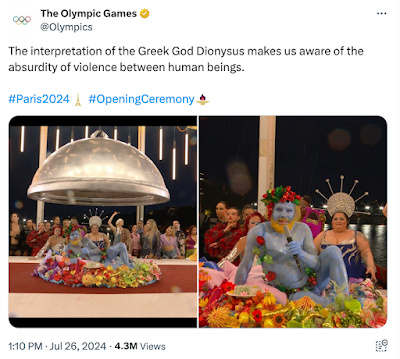 |
| J.D. and Usha Vance at their Hindu wedding. |
Both our Vice President (and now likely Presidential candidate)
Kamala Harris and Usha Chilukuri Vance, the wife of Republican Vice Presidential Candidate JD Vance, have roots in the Hindu religion, which has sacred connections to cannabis.
"The academic study of Indic religions, and of yoga, has been intimately tied to questions
regarding the role of psychoactive substances from an early stage. This is particularly with
respect to soma, a sacred beverage utilized within the Vedic tradition," writes Stuart Ray Sarbacker, Professor of Comparative Religion and Indian Philosophy at Oregon State University, in his paper "Psychoactives and Psychedelics in Yoga: Historical Contexts and Contemporary Culture."
Dr. Sarbacker continues, "The role and nature of the beverage referred to as soma in the Vedic tradition of fire
sacrifice (yajña) and its purported psychoactivity has been thoroughly investigated within and
outside of Indology. ... Soma is revered as a sacred beverage and as a deity, said to confer visionary experience and
immortality upon the brāhmaṇa who ritually consumes it. Soma is identified as amṛta, literally
the elixir of 'nondeath,' of immortality, a name resonating through the millennia of later Hindu
narrative and discourse. There are various hypotheses as to the botanical identity of soma, some
of the leading candidates being ephedra, peganum harmala (Syrian rue), cannabis, poppy, mead
or wine, ergot, amanita muscaria (Fly Agaric mushroom), psilocybe cubensis (Magic
Mushroom), and an ayahuasca analog."
Chris Bennett, Lynn Osburn & Judy Osburn write in their book Green Gold The Tree of Life: Marijuana in Magic & Religion, "Descriptions of haoma, or soma, list it as yellow or gold-like in color, the color of ripe cannabis in the Middle East and India. Source material on the subject also tells us that 'the intoxicating juice of the haoma herb found on their mountain slopes' grew in the Hindu Kush mountains and valleys, a place that is still famed for its powerful ganja."
 |
| Harris (top left) wearing a sari. |
"Cannabis use is a part of mainstream Hindu practice, prevalent during
Mahāśivarātri,
Durgā Pūjā, and other festivals [including
Diwali] in the consumption of bhaṅgā, a mixture of
cannabis, milk, and spices, which augments the festival spirit," writes Sarbacker. "Routine cannabis use is extensive
among renouncer (sādhu and sādhvī) communities in India as a sacramental substance and a
social glue. Some Sādhus and Sādhvīs are said to follow, per Bevilacqua, the so-called 'chillumchai' diet—combining the mildly psychedelic effect of Indian cannabis with the stimulation of
tea with sugar and spices. One study found that among
a subset of Sādhus present at the Paśupatināth temple in Nepal, virtually all used cannabis
regularly, with a high percentage reporting its use as a support for meditation."




